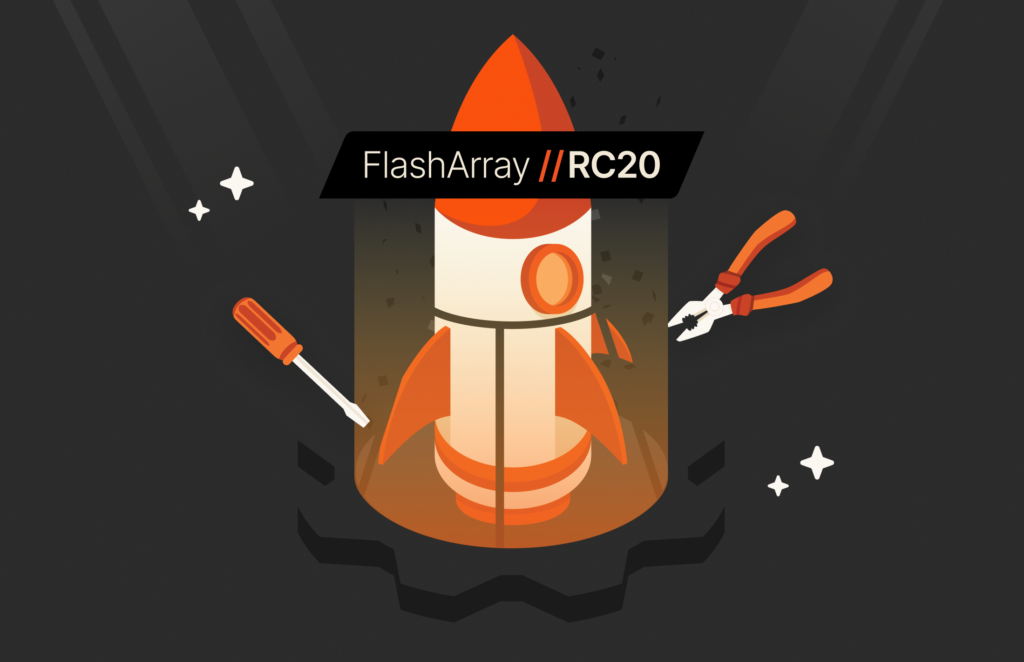Simplifying complicated processes is a goal for any organization. Reporting and analytics, in particular, have always seemed to hamper legacy data storage platforms. The complexity of the legacy software needs a lot of care and attention. And that means managing the thing that was supposed to simplify managing your data can become a chore in itself.
The complexity of these legacy tools is one of the things that inspired us to build Pure1®. Our design goal was straightforward: Create a cloud-based storage management tool that’s both modern and simple to use—without sacrificing enterprise capabilities.
When we first launched Pure1 in 2015, it was pretty innovative for a storage company to develop a 100% cloud-based tool. At that time, organizations were still trying to figure out how to use the public cloud and define use-cases for cloud-based applications.
Fast forward to the present. We live in a world where data often exists in multiple locations with multiple priority levels: private-cloud, public-cloud, and more commonly, hybrid-cloud — a combination of the two. In retrospect, we made a great choice when building Pure1 as a SaaS-based cloud platform.
We had the foresight to know data would extend beyond the confines of the data center. We made a choice that, I believe, enables you to effortlessly monitor, analyze, plan, and manage your enterprise storage across hybrid clouds.
With Pure1, you can quickly identify, report on, and optimize your data, no matter where it lives. Pure1 provides a single view, whether you’re using an on-premises solution, a Pure as-a-Service™ subscription, or Pure Cloud Block Store™, Pure’s cloud-based data platform available in AWS and Microsoft Azure.
Not All Cloud Capabilities Are the Same
HPE recently acquired CloudPhysics, a SaaS-based virtualization management platform. At first glance, it seems like an exciting purchase. But, when you dig deeper into HPE’s cloud strategy to date, it leaves me scratching my head.
HPE’s hybrid-cloud strategy allows customers to take advantage of the public cloud via cloud-adjacent Nimble Storage hybrid (capacity) and all-flash (performance) storage deployments co-located near select public-cloud data centers. HPE markets these as “Cloud Volumes” (obtained via the Nimble Storage acquisition). Replicated Nimble Storage volumes, from on-prem arrays to cloud-adjacent co-located arrays, are presented to cloud-compute instances. It’s an interesting take on “hybrid-cloud,” but we believe it’s not truly hybrid: with Cloud Volumes, no data resides in the public cloud. HPE’s data platform can’t extend from on-premises directly into public-cloud storage provided by a hyperscaler. Customers are also very limited by the on-premises HPE platforms that can actually leverage this capability. For example, Cloud Volumes doesn’t support HPE’s cloud-adjacent 3PAR StoreServ or Primera platforms.
While this isn’t entirely related to the CloudPhysics acquisition, it’s important to be aware of it because I believe it will impact how the software is implemented. It’s also quite confusing since it appears that the current HPE so-called hybrid-cloud offering doesn’t support any data platforms other than Nimble Storage.
Currently, HPE customers can use InfoSight to manage “hybrid-cloud” assets. We can only assume that instead of organically building additional functionality into this product, HPE decided to expand its capabilities via integration with CloudPhysics. So, there may be a gap in functionality for some time as the company integrates the features needed to expand its capabilities.
With HPE leaning in with a cloud-adjacent strategy, it will also be interesting to see how it plans to incorporate some of CloudPhysics’s unique features. These might make more sense if HPE offered more software-defined public-cloud offerings like we do with Pure Cloud Block Store.
Pure Cloud Block Store offers seamless data mobility across on-premises FlashArrays and, today, AWS and Azure public-cloud environments. It delivers industry-leading data efficiency, which means you’ll buy less capacity in the cloud without having to sacrifice important storage features and flexibility. And with smart storage management from Pure1, you can monitor and optimize your storage from anywhere in the world. Quite simply, Pure Cloud Block Store makes public-cloud block storage better.
So, back to HPE and CloudPhysics. When will HPE expand its storage portfolio to add true hybrid-cloud capabilities whereby you can choose to have your data actually reside in-cloud? An offering that isn’t just Nimble Storage-centric and cloud-adjacent? A software-defined solution running in the public cloud?
While we believe the CloudPhysics acquisition adds some interesting capabilities, it seems like HPE has work to do to refine its hybrid-cloud strategy to best leverage this acquisition and unlock its true potential with an “in-cloud” (not merely a cloud-adjacent, co-located) storage offering.
The good news? You don’t have to wait until that happens. Pure Storage® is already doing this and more. Get the data storage your organization needs without having to make any compromises.
- https://www.hpe.com/us/en/newsroom/blog-post/2021/02/hpe-reimagines-customer-and-partner-experience-with-software-and-data-driven-insights.html
![]()




